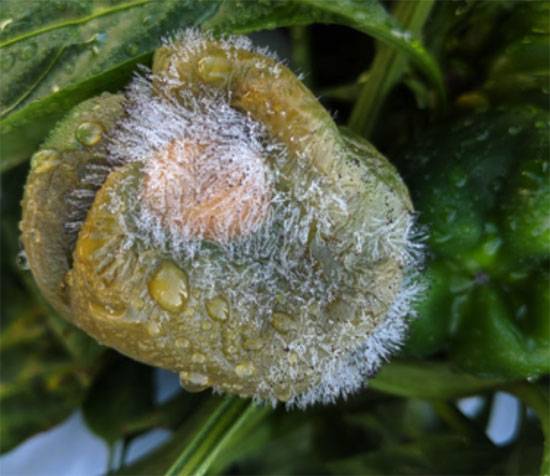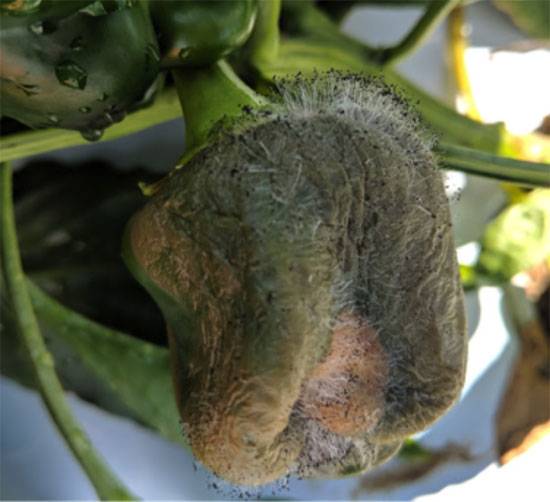Capsicum
Wet Rot

Choanephora cucurbitarum
Fungal Disease

Choanephora cucurbitarum
Fungal Disease

Choanephora cucurbitarum
Fungal Disease
Wet rot is a significant disease affecting capsicum (bell pepper) crops, presenting challenges from the transplant stage all the way through to harvest. Below is a brief overview of the symptoms, causes, impact, and cultural controls for managing wet rot on pepper plants.
1. Symptoms Throughout Growth Stages
- Transplant to Harvest: Wet rot can manifest at any stage of the plant's development, affecting all plant parts except the roots.
- Fruit Infection: At all stages of fruit development, distinct black pins can be observed on the surface. These are fungal sporangia (spores) produced on sporangiophores, indicating an active fungal infection.
- Flower Abortion: Infected flowers may abort, leading to reduced fruit set.
- Fruit Collapse: In severe cases, infected fruits can collapse completely, leading to significant losses.
2. Infection Mechanism
- Wound Sites: The disease often enters through wound sites, where fungal hyphae invade and establish infections.
- Fresh Sites: Wet rot can also occur on fresh tissues, making it crucial to manage plant health and avoid mechanical damage.
3. Fungal Survival and Spread
- Soil Persistence: The fungus responsible for wet rot can survive in the soil, posing a continuous threat to pepper crops from one growing season to the next.
- Environmental Conditions: High moisture levels in the environment can exacerbate the spread of wet rot, making it essential to monitor and manage humidity levels in the growing area.
4. Cultural Controls
- Plant Resistance: Currently, there are no resistant cultivars for capsicum, making cultural controls vital for management.
- Increase Plant Spacing: Adequate spacing between plants allows for better airflow, reducing humidity and the likelihood of wet rot.
- Adequate Drainage: Ensuring proper drainage in the planting area helps prevent water accumulation, which can foster fungal growth.
- Avoid Overhead Irrigation: Instead of overhead irrigation, opt for drip irrigation to minimize leaf wetness and reduce the risk of infection.
- Manage Nutrition: Avoid excess fertilization, which can create a dense canopy that retains moisture and increases disease susceptibility.
Wet rot is a serious concern for capsicum growers, affecting plant health and fruit yield. Understanding its symptoms and infection pathways is vital for developing effective management strategies. By implementing cultural controls, such as proper spacing, drainage, and irrigation practices, growers can significantly reduce the impact of this destructive disease and improve their overall crop resilience. Early detection and intervention remain key to managing wet rot effectively.





